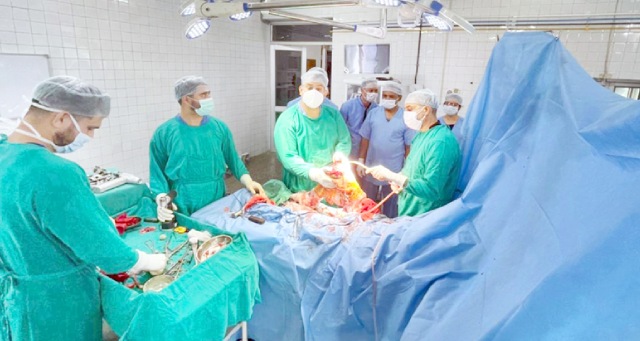The first TKR surgery was done in 1968 Since then it total knee replacement surgery [TKR] has become one of the most successful procedures in all medicine. Hundreds of thousands of patients with severe knee pain undergo TKR every year worldwide.
The normal knee
The largest joint in the body, healthy knees are required for doing mostly everything. It is a hinge like joint, made of the lower end of the thighbone (femur), the upper end of the shinbone (tibia), and the kneecap (patella). The ends of these three bones where they touch are covered with cartilage, a smooth substance that protects the bones and enables them to move easily. There is a thick viscid fluid between the cartilages, which makes movements smooth and jerk free. The cartilages attached to the femur and the tibia are called the menisci. They are C-shaped wedges and act as ‘shock absorbers. Large ligaments hold the femur and tibia together and provide stability. The long thigh muscles give the knee motility. All inner surfaces of the knee joint are covered by a thin lining called the synovial membrane. This membrane secretes and holds the synovial fluid, which reduces friction. Diseases like osteoporosis, arthritis or injury damage the cartilages and bone and disrupt smooth movement of the joint. This results in pain, muscle weakness, reduced motility and even instability.
Causes of painful knees
The most common reason for knee pain is arthritis. The commonest types of arthritis are osteoarthritis, rheumatoid arthritis, and post-traumatic arthritis.
Osteoarthritis: This is age-related and ‘wear and tear’ type of arthritis. Occurs in people 50 years and older. The cartilage that cushions the bones of the knee wears away, the bones rub against each other and this results in knee pain and stiffness.
Rheumatoid arthritis: Here the synovial membrane that lines the joint internally is inflamed and thickened. This damages the cartilage and the result is as above.
Post-traumatic arthritis: This may follow a serious knee injury. Fractures of the bones surrounding the knee or tears of the knee ligaments may damage the cartilages, and over time result in knee pain and reduced motility.
What does TKR do?
A total knee replacement (aka Arthroplasty) doesn’t replace the whole lower end of femur and the upper end of tibia, only their articulating surfaces are covered with artificial implants.
Do you need TKR?
TKR has been described as ‘Quality of Life Improvement Surgery’. The daily knee pain, sometimes severe but mostly reduced by medicines, will be gone. Then you can walk, play golf, swim gently, drive a car or a two wheeler and generally do all things you did before your knee pain began. Painless knees help you exercise, the most important ‘Quality of Life’ improvement. Painful knees may lead to a sedentary life and weight gain and a vicious cycle of more pain with more weight.
You must get TKR Surgery When…
- Your knee has become bowed due to arthritis
- You cannot sleep at night because turning over causes knee pain
- Severe knee pain or stiffness that limits walking, climbing stairs, and getting in and out of chairs
- Pain even while resting
- Swelling that does not improve with rest or medications
- Instability of the knee joint
- When alternative knee pain therapies like medications, cortisone injections, lubricating injections, physical therapy have failed
Ideal TKR Candidates:
While people older than 100 years have undergone TKR, there are also those young adults who needed knee replacement because of a severe injury. But most patients are 50+.

